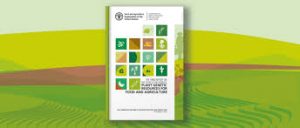Third Report on the State of the World’s Plant Genetic Resources for Food and Agriculture:

The FAO released the Third Report on the State of the World’s Plant Genetic Resources for Food and Agriculture on March 24, 2025.
- The report highlighted alarming dependency on nine crops and threats to global plant genetic diversity. State of the World’s Plant Genetic Resources for Food and Agriculture (SoW-PGRFA) is a comprehensive assessment of the conservation, use, and status of plant genetic resources for food and agriculture (PGRFA) at global, regional, and national levels.
- Report released by the Food and Agriculture Organization (FAO) of the United Nations.
- Aim is to evaluate trends, gaps, and priorities in in situ and ex situ conservation of plant genetic resources and To guide global action plans for safeguarding plant biodiversity and food security.
Third Report (2025):
- Crop concentration: 60% of global food comes from just nine crops (sugarcane, maize, rice, wheat, potatoes, soybeans, oil palm, sugar beet, cassava).
- Threatened diversity: Globally, 6% of farmers’ varieties (FV/LR) are threatened; in nine sub-regions, this exceeds 18%.
- Highest risk regions: Southern Africa, Caribbean, and Western Asia face the highest loss of genetic diversity.
- India’s scenario: Over 50% of documented FV/LRs across five agroecological zones are under threat.
- Ex situ collections: Over 5.9 million accessions conserved globally, with 41% safety-duplicated, many in the Svalbard Global Seed Vault.
- On-farm efforts: Around 35 million hectares in 51 countries cultivated with FV/LR to conserve genetic diversity.
- Climate threat: Frequent disasters impact crop diversity, with poor germplasm adaptation to local conditions post-disasters.




